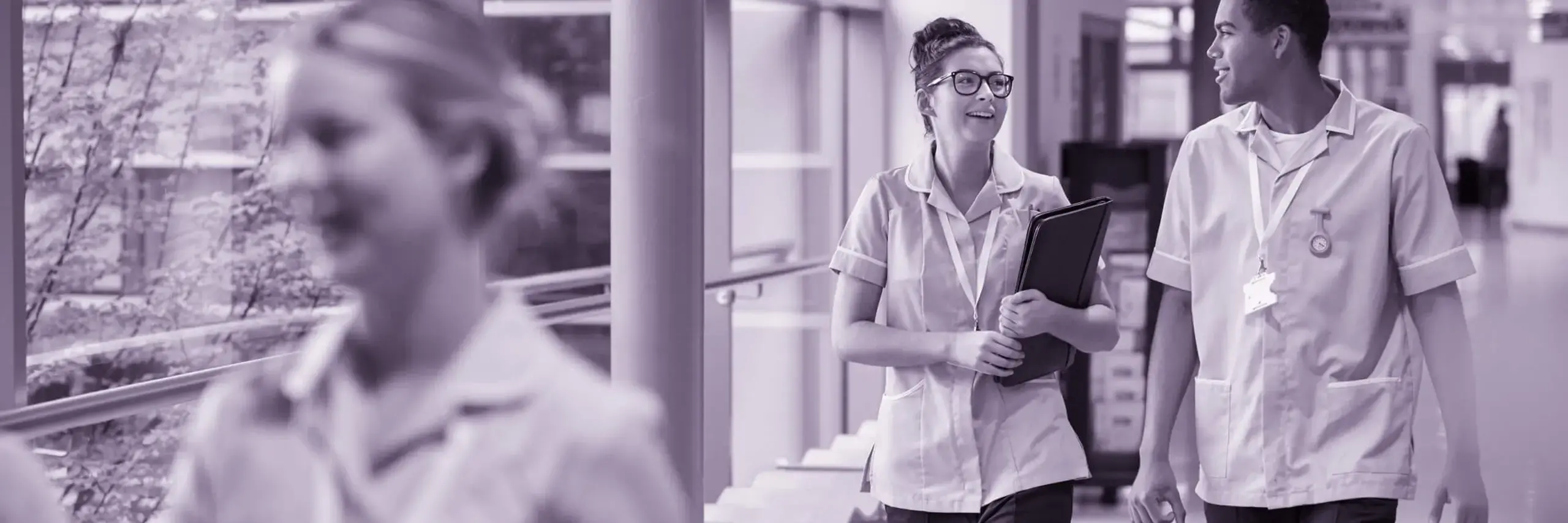Main content
The Duty of Candour in Scotland – what we heard from our 2021 conference
02 Nov 2021
Putting candour into practice: how is it working and what more needs to be done?
In September we co-hosted an online conference with the University of Edinburgh Law School, to explore candour in the context of health and social care in Scotland. We considered the barriers to it, and how we can help professionals to speak up when things go wrong in a way that is compassionate and protects patients.
This year, we examined the interplay between professional and organisational duties, and how to put candour into practice from three perspectives: the patient, the professional, and the NHS Board. Delegates included the professional regulators, patient bodies, Scottish Health Boards, professionals and representative bodies, and academics.
Dr Clea Harmer, Chief Executive of SANDS (The Stillbirth and Neonatal Death Charity) spoke to the central theme of our event – how is candour working for patients and what more needs to be done? She explained that from a bereaved parent’s perspective, saying sorry is ‘not a blame game’. Bereaved parents don’t want to blame, they want to understand what happened and be able to explain it to their family when they are asked, ‘so why did our grand-child/sister/niece die?’ Blame is what happens when parents are excluded.
“Blame is what happens when parents are excluded.”
Parents want something positive to come of these events – to be involved in reviews[1] and to be equal partners. What is also crucial is the way that hospitals communicate with bereaved parents. Staff need training, support and advice in this area, so that they are able to demonstrate their compassion, and that they are open and willing to learn.
How can processes change behaviour?
We learned about two approaches to embedding learning and openness on the frontline of healthcare. Team Based Quality Reviews are an approach to quality and safety which brings multi-disciplinary teams together to reflect on things that go wrong using human factors and systems thinking.
Healthcare Improvement Scotland’s (HIS) Being Open framework[2] aims to develop and test sensitive, effective and reliable ways of communicating openly with patients and families about things that go wrong. Staff training is key – communicating compassionately is a skill – and in many cases changes in behaviour are needed to make the right response second nature. It is also important to build it into operational processes to avoid it being disregarded.
Staff wellbeing must also be given priority to support them to be candid in the right way. And it is important to acknowledge that avoidable harm to a patient takes an emotional toll on professionals too.
Tackling barriers to openness for professionals, from psychological safety to the fear of litigation
We discussed the barriers to candour faced by professionals, drawing on insights from mediation and the world of litigation. Barriers to openness in this area have shifted over the years due to:
- previous scandals in the health sector, such as Mid Staffordshire and the subsequent Francis report
- the introduction of legislation like the duty of candour legislation, which divorced acts of candour from direct consequences in litigation
- and the new HIS national framework for reporting adverse events, which made clear that reports should be shared with patients/families, however critical they may be.
Fear of being involved in adversarial hearings continues to work against a true culture of learning from mistakes. Barriers are likely to be reduced when staff don’t fear being blamed or punished when they report adverse events.
We explored both personal and professional reflections on overcoming cultures of fear. In mediation, AARREE (Acknowledge, Acceptance, Recognition, Reassurance, Engagement, Explanation) is a much-used tool – but there are challenges to implementing this in an adversarial setting. Mediation provides an opportunity to explain oneself, and be heard, without fear of reprisal.
Fear cannot be the driver but so often is; it can be insidious and demoralising, and can manifest in sadness or anger. Love and compassion need to replace fear, to facilitate confidence, competence, and a culture of learning. Shame, fear and anger can all lead to moral disengagement, and should not be allowed to shape our responses to events that result in harm.
Understanding patient and service user expectations of the most difficult conversations
Our final session focused on patients’ perspectives. We heard about the seminal, tragic cases of Robbie Powell and John Moore Robinson, and how they had helped make the case for a duty of candour. And how bullying and blaming staff can prevent them from doing what they want to do – which is to tell the truth. Contrary to people’s perceptions, lack of openness actually increases the likelihood of complaints and litigation.
Before the legal duty of candour was introduced[3], there were no rules against covering up a medical accident. Those against the organisational duty argued that it wasn’t needed because they were already being open, or because there was already a professional duty of candour which was sufficient on its own. Another argument against the duty came down to the financial cost of litigation. These arguments don’t stand up to much scrutiny however.
What is needed to make sure that the duty of candour is a success, while avoiding a tick-box approach, is training and support for staff, such as the Harmed Patient Pathway[4] - as well as robust monitoring and regulation, and allowing the public to report breaches. A positive example of this is the Scottish Public Services Ombudsman (SPSO) guidance which urges people to make apologies meaningful, using the four ‘R’s: regret, responsibility, reasons, remedy.
We also heard about the preliminary findings of a piece of research being carried out for the Joint Commission for Openness and Learning, on what ‘good’ compassionate involvement looks like when care has gone wrong. Key reflections from the research so far identify how difficult the review process is for patients, carers and relatives. It makes them feel weary, which can lead to anger, exhaustion, and poor mental health. The drawn-out nature of the reviews, and the style of communication are aggravating factors.
Preliminary findings suggest that an effective review process relies on its delivery as much as its content. Respondents would appreciate being asked what matters to them, and what method of communication would work best. Another common theme is about closing the loop – to follow through later down the line to show how organisations have progressed the actions they said they would take forward.
After-the-event: reflections from the Authority and the University of Edinburgh Law School
We learnt a huge amount from the varied and insightful contributions of this event. If we had to draw one key message from what we heard, it is that to deliver the candour and openness that patients and families need, we should not think about it primarily as a static legal and professional obligation. It is in fact a cultural and behavioural change that should be embedded through carefully designed processes and training, which are reviewed and revisited over time, and embraced at all levels of an organisation.
Speakers and contributors demonstrated that this is possible, but also that it can be challenging. We hope our event made a positive contribution to the collective thinking on how to tackle these challenges.
On 30 November, our assistant Director of Scrutiny and Quality Douglas Bilton will be speaking at a webinar about how silence can arise within organisations, focusing on regulation. Further details can be found here: https://www.eawopimpact.org/event-details/silence-is-golden
[1] https://www.sands.org.uk/sites/default/files/Sands%20Principles%20of%20Parents%20Engagement%20in%20Review.pdf
[2] https://www.healthcareimprovementscotland.org/our_work/governance_and_assurance/learning_from_adverse_events/being_open_guidance.aspx
[3] https://www.avma.org.uk/policy-campaigns/duty-of-candour/
[4] https://www.avma.org.uk/policy-campaigns/patient-safety/harmed-patient-pathway/



